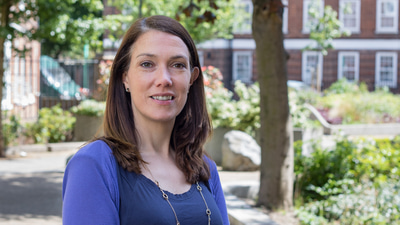- OT
- Professional support
- AOP
- Bringing triage to the forefront
Perspectives
Bringing triage to the forefront
Optometrist and AOP chair, Dr Julie-Anne Little, reflects on triage: what it involves, how it is used in practice, and whether optometry needs to embrace the terminology

17 December 2021
Triage is important for eye care professionals for many reasons, not only because optometrists are essentially the gateway in primary eye care and the main source of referrals into secondary care, but also because within a general practice there will be certain levels of triage being undertaken every day by both clinical and support staff across the whole team.

However, I do think that the word triage feels like a hospital term and one that is not necessarily used in practice with regards to how staff are trained in filtering patients appropriately when they telephone to make an appointment. As a profession, we are probably slightly behind the curve in using the term triage and formalising what we mean by that in our working lives. Yet I believe that triage has been going on informally for many years in practice; people across the entire practice team are doing it unconsciously day-to-day. Triage is not just about the optometrist referring into secondary care, it is also about the training of support and practice staff as well.
As a profession, we are probably slightly behind the curve in using the term triage and formalising what we mean by that in our working lives. Yet I believe that triage has been going on informally for many years in practice
When triaging in practice, I think the main concern held by practitioners is about getting the whole picture. Of course, as clinicians, we want to collect as much clinical information as we can in order to inform our clinical decision-making process. Yet where you are limited by a remote consultation, for example, you are limited to verbal information. Good triage relies on good communication and the assimilation of information across the whole practice team. Therefore, there is a real risk that if that does not occur then there could be gaps in information and things might be missed.
In terms of remote consultations, I feel there is a real scope for them to become part of our job and what we do. However, my concern currently is how it fits into General Ophthalmic Services and the requirements of an NHS sight test, as well as the risk indemnity linked to it. While there is great potential, there are also many aspects that need to be thought through. So much of what we do as a profession requires a face-to-face element, so remote consultation for me is a step along the way on the pathway for the patient, but at some point they will probably need to be sitting in the chair in front of you.
It so often strikes me when having conversations with colleagues in secondary care that they have little awareness of the types of things that the profession is filtering out in practice through effective triage and that they are therefore not seeing. This means that in these situations it can often feel that eye care starts at the hospital door. But 95% of the population are having their eye care needs managed by optometrists in primary care, whether that is just because it’s routine or whether it’s managing conditions that are no longer within other schemes such as Minor Eye Conditions Services (MECS), for example.Good triage relies on good communication and the assimilation of information across the whole practice team
I think the profession has a long-standing history of really standing up and serving its communities very well – COVID-19 has helped showcase that, as well as things that have been overlooked in the past. Eye care and primary care professionals manage a wide range of things for their community and for their patients. Even when something is referred to secondary care, for the majority of eye care professionals, it does not feel like the responsibility stops there. Many of my colleagues will want to follow up on those cases; they will want to close the loop of care and have an ongoing relationship with the patients. That continuity of care, I know, is really important for patients and clinicians, who value seeing the progress, and hopefully the good outcome, for patients they have referred.
About the author
Dr Julie-Anne Little is an optometrist, chair of the AOP Board, and a senior lecturer in optometry and vision science at Ulster University.


Comments (0)
You must be logged in to join the discussion. Log in